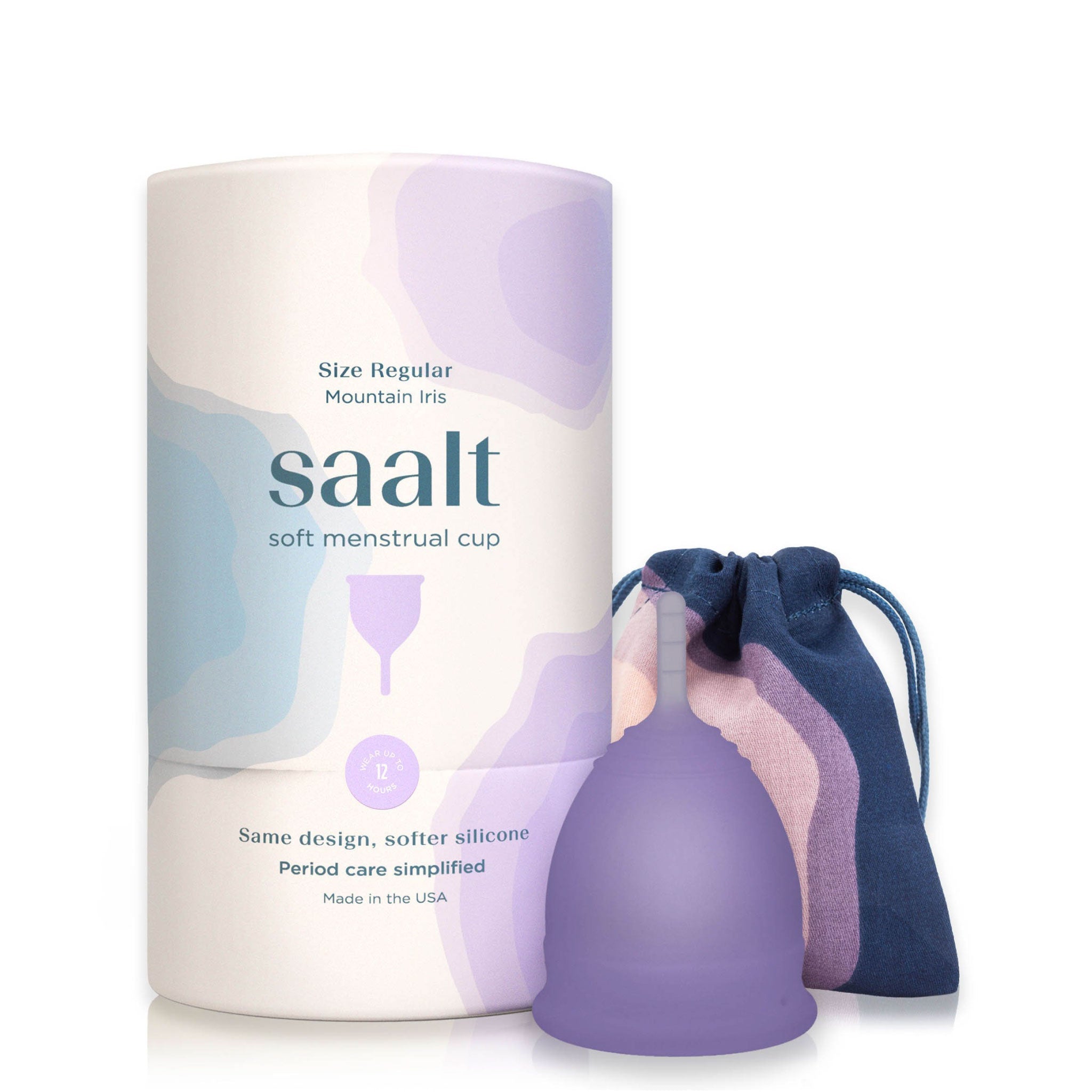Switching to reusable period care-like period underwear, menstrual cups, and menstrual discs -can feel daunting if you’re used to the convenience of disposables. The prospect of rinsing, washing, and maintaining these products raises questions about hygiene, time, and effort. But how difficult is reusable period care maintenance in reality? Let’s break down the process, address common concerns, and offer practical tips, so you can decide if the switch is right for you.
Why Consider Reusable Period Products?
Before diving into maintenance, it’s worth noting why people make the switch:
-
Environmental impact: Reusables drastically reduce landfill waste.
-
Cost savings: One-time purchases can last for years, saving hundreds, if not thousands of dollars.
-
Comfort: Many find leakproof underwear and reusable menstrual cups and discs less irritating than disposables.
-
Health: Fewer chemicals and fragrances, and potentially less risk of toxic shock syndrome with proper use.
Understanding the Main Types of Reusable Period Products
-
Period panties: Washable, absorbent underwear available in several absorbency levels (any they hold more fluid than pads).
-
Menstrual Cups: Flexible medical-grade silicone cups inserted into the vagina to collect flow.
-
Menstrual Discs: Similar to cups but sit higher in the vaginal canal and are often praised for comfort and suitability during period sex.
Each type has its own care routine, but the principles are similar: rinse, wash, dry, and store.
Reusable Leakproof Panties: Maintenance Demystified
Daily Care Routine
-
Rinse Immediately After Use
-
When removing leakprood panties, rinse them under cold water to remove as much blood as possible. Cold water is key-hot water can set stains.
-
Some find this step satisfying, as it quickly removes visible blood and reduces the chance of lingering odors or stains.
-
Soak for Deep Cleaning (Optional)
-
You can soak period panties in cold water for 30 minutes to a few hours, sometimes with a small amount of detergent made for delicates, or a little vinegar for extra cleaning power.
-
Soaking is especially useful for heavily stained underwear or if you can’t wash them right away.
-
Store Until Laundry
-
Store rinsed underwear in a wet bag, a soaking container, or a dry pail until laundry day.
-
Wet bags are leak-proof and portable, making them ideal for travel or work.
-
Machine or Hand Wash
-
Wash period panties on a gentle cycle with cold water. A delicates bag is recommended to keep your undies from catching or tearing on machine agitators.
-
Use a mild, fragrance-free detergent; avoid fabric softeners, as they coat fibers and reduce absorbency.
-
You can wash leakproof panties with your regular laundry, as long as you’ve rinsed them well.
-
Dry Properly
-
Air dry period pants in sunlight if possible-the sun acts as a natural disinfectant and helps remove stains or potential odors.
-
If air drying isn’t possible, dry indoors in a well-ventilated area.
Long-Term Care
-
Rotate your period panties: Using a variety of pairs in rotation prevents excessive wear on any single pair.
-
Regular checks: Inspect for fraying, reduced absorbency, or lingering odors. Replace underwear that show significant wear.
-
Deep cleaning: Occasionally, “strip” leakproof panties by soaking in a vinegar solution to remove detergent buildup. Doing this step will help the patented gusset technology perform better over a longer period of time.
Common Questions & Troubleshooting
-
Do period underwear smell? If rinsed and washed promptly, reusable leakproof underwear shouldn’t smell. Persistent odors may indicate detergent buildup or insufficient drying.
-
What about stains? Cold water rinses and prompt washing prevent most stains. Sunlight is a natural stain remover.
-
Is it hygienic? Yes, as long as the underwear is thoroughly washed and dried between uses.
-
Is it a hassle? Most users report that after a short adjustment period, the routine becomes second nature and takes only a few extra minutes per day. The financial savings add up quickly.
- Shop: Best period underwear
Menstrual Cups and Discs: Maintenance Basics
During Your Period
-
Empty and Rinse
-
Empty your menstrual cup or disc every 4–12 hours, depending on your flow and product capacity.
-
Rinse under cold water first (to prevent stains), then warm water. Some use a gentle, scent-free soap, but many simply rinse thoroughly.
-
Ensure all suction holes and crevices are clean. You can achieve this by filling the cup with water, placing your palm over the cup, flipping the cup and your hand over, and pumping the water inside the cup through the holes near the rim, while holding the water-filled cup on the palm of your hand.
-
On the Go
-
In public restrooms, many users just empty the cup/disc, wipe with toilet paper or a cup wipe, and reinsert. You can fully rinse your cup when you return home.
-
Some don’t bother drying the cup before reinsertion; a little water can actually help with comfort during insertion.
After Your Cycle
-
Deep Clean
-
Wash with mild, pH-balanced soap and water, then sanitize by boiling in water for 5 minutes or using a cup steamer.
-
Let the cup/disc air dry completely before storing in a breathable pouch.
-
Avoid storing in airtight containers, as trapped moisture can promote bacteria or odors.
Common Questions & Troubleshooting
-
Do I need special soap? Use a gentle, fragrance-free, oil-free soap, pH-balanced soap. Harsh soaps or oils can degrade silicone and cause irritation.
-
What about staining? Cold water rinses help prevent stains. Some discoloration over time is normal and doesn’t affect function.
-
Is it hygienic? Yes, with regular cleaning and proper storage, menstrual cups and discs are very hygienic.
-
How much time does it take? Most users find that maintenance takes only a few extra minutes per day, and even less after each cycle. The cost savings over time add up quickly.
- Shop: Best menstrual disc or best menstrual cup
Is Maintenance Hard? A Realistic Assessment
The Learning Curve
-
Initial Adjustment: The first cycle or two may feel awkward as you establish your routine. Rinsing period panties or cups in the sink can feel unfamiliar, but most users adapt quickly.
-
Stigma and Squeamishness: Handling menstrual blood is new for many, but users often report that it becomes routine and even empowering. Hey, it’s your body, and there isn’t anything wrong with your normal body functions.
Time Commitment
-
Leakproof panties: Rinsing takes 1–2 minutes per pair. Washing is folded into your regular laundry routine. Drying is passive.
-
Cups/Discs: Rinsing and reinserting takes about 2–3 minutes. Boiling or steaming after your cycle takes 5–10 minutes, but is hands-off.
Effort vs. Reward
-
Effort: Slightly more than disposables, mainly due to rinsing and occasional soaking.
-
Reward: Significant financial savings, less waste, and improved comfort for many users.
Community Insights
-
On Reddit, users frequently discuss how initial intimidation gives way to ease and satisfaction. Many wish they had switched sooner and cite the minimal extra effort compared to the benefits.
-
Troubleshooting is straightforward: most issues (smells, stains, reduced absorbency) are solved with better rinsing, occasional deep cleaning, and avoiding fabric softeners and the dryer.
Tips for Making Maintenance Easier
-
Have enough products: Stock up so you’re not forced to wash daily.
-
Use wet bags: These make storage and transport simple and subtle.
-
Set a routine: Rinse underwear or cups as soon as possible after use.
-
Sun dry when possible: Sunlight naturally disinfects and removes stains.
-
Avoid fabric softeners and harsh soaps: These reduce absorbency and can irritate skin.
-
Rotate products: This prevents excessive wear and extends lifespan.
Travel and On-the-Go Maintenance
-
Period pants: Bring a wet bag for used pads. Rinse when you have access to a sink.
-
Cups/Discs: Public restroom changes are manageable-just empty, wipe, and reinsert. Deep cleaning can wait until you’re home. You can always bring a full water bottle into the stall with you and rinse your cup and hands over the toilet. Grab a paper towel before heading into the stall as well. You got this!
When to Replace Reusable Products
-
Period panties: With good care, can last 1-2 years or more. Replace if absorbency drops, fabric frays, or persistent odors develop. Industry standard on regular underwear is 6-12 months anyway.
-
Cups/Discs: Silicone products can last up to 10 years, depending on brand and care. Replace if cracks, tears, or sticky residue appear.
Make the Switch: Maintenance Is Manageable
Reusable period care maintenance is not as hard as it may seem. While it requires a little more effort than tossing a disposable in the trash, the routine quickly becomes second nature. Most users find that the benefits-cost savings, comfort, and environmental impact-far outweigh the minor inconvenience of rinsing and washing.
In short:
-
The daily routine is simple and quick.
-
Deep cleaning is infrequent and easy.
-
Most users adapt within a cycle or two and never look back.
If you’re considering making the switch, know that the learning curve is short and the rewards are long-lasting. With a little planning and the right habits, reusable period care can fit seamlessly into any lifestyle.





